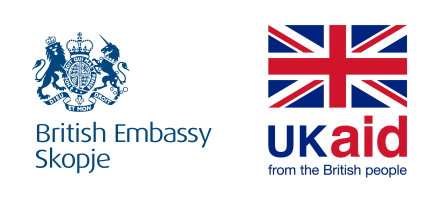Por, duket se partitë politike pas tronditjes dhe në një periudhë jashtëzakonisht të shkurtër filluan të kuptojnë se ekstremi i djathtë është vetëm një hap larg pushtetit. Dhe fillojnë të mobilizohen me dëshirën për të shmangur kaosin e ndodhur pas shpërndarjes së Kuvendit.
"A je i çmendur?". Kjo është pyetja që më 11 qershor i është bërë presidentit të Francës Emmanuel Macron nga „Figaro Magazin„, një media serioze pranë të djathtës franceze.
Vetë pyetja është tregues i atmosferës së krijuar nga njoftimi i Macron për shpërndarjen e Kuvendit menjëherë pas shpalljes së rezultateve të zgjedhjeve në të cilat Franca zgjodhi përfaqësuesit e saj në Parlamentin Evropian (PE).
Reagimi unanim i gjithë klasës politike në Francë, pa asnjë përjashtim, ishte – tronditje kombëtare! Në të gjitha nivelet. Përveç disa këshilltarëve të Macron, askush nuk ishte në dijeni të vendimit për shpërndarjen e Parlamentit dhe shpalljen e zgjedhjeve të reja kombëtare. Madje edhe kryeministri, i riu Gabriel Atal, ka mbetur i shtangur nga ky njoftim. Reagimet e qytetarëve u ngjyrosën me zemërim të madh dhe madje edhe Brigitte Macron ishte fishkëlluar gjatë funeralit të këngëtares së njohur Françoise Hardy.
Shkurtimisht, presidenti e ka vënë kombin në rrezik të madh.
A do të jetë Franca vendi i dytë themelues i BE-së, me një kryeministër dhe qeveri të ekstremit të djathtë? A do të duhet Macron të inaugurojë Lojërat Olimpike të planifikuara për këtë verë, së bashku me 28-vjeçarin Jordan Bardella, i cili është kandidat për kryeministër?
Të gjithë analistët dhe politikanët, qofshin ata nga shumica presidenciale e Macron, majtas apo djathtas, mbetën praktikisht pa fjalë. Për arsyen e thjeshtë se kjo shpallje apo njoftim dhe zgjedhjet që do të zhvillohen në dy raunde, më 30 qershor dhe 7 korrik, nuk plotësojnë kriteret e racionalitetit. Dhe nuk i japin përgjigje pyetjes se pse është e nevojshme që papritur të shkaktohet një disfatë e mundshme në zgjedhje për partinë e Macron apo bashkëjetesa me të djathtën ekstreme, madje kur këtë nuk e kërkon as Kushtetuta dhe as ligjet.
Shampanjë për Le Pen
I vetmi formacion politik që hapi shampanjën atë ditë ishte, pa dyshim, e djathta ekstreme e Marine Le Pen dhe presidentit të ri të ri të Kuvendit Kombëtar, Jordan Bardela.
Më 9 qershor festuan fitoren në zgjedhje. Kuvendi Kombëtar ka arritur të fitojë 30 vende në PE me 31 për qind të votave. Shumë pas tyre, me vetëm 14,6% dhe 13 mandate, ishte lista e kryesuar nga Valerie Ayer, kandidatja e presidentit Macron, në vendin e tretë me 13,83% me 13 mandate dhe në vendin e katërt me 9,89% dhe 9 mandate, e majta radikale.
Ata ndiqen nga krahu i djathtë me 7.25 për qind dhe 6 vende, më pas të gjelbërt me Europa Ekologjia me 5.5 për qind dhe 5 vende dhe në fund me 5 vende dhe 5.47 për qind është një tjetër opsion ekstremisht radikal i djathtë i drejtuar nga Marion Mareschal (mbesa e Marin Le Pen) dhe Eric Zemur. Edhe pse dy opsionet e ekstremit të djathtë mund të mos jenë në të njëjtin grup politik në PE, nuk ka dyshim se ideologjia e tyre është e ngjashme.
Sot, të gjitha sondazhet, pothuajse pa përjashtim, parashikojnë një fitore edhe më të madhe të Kuvendit Kombëtar dhe një vend të tretë për partinë presidenciale të Macron të quajtur Rilindja.
Sipas një sondazhi të IPSOS, të porositur nga media France Info dhe Parisien, Kuvendi Kombëtar do të fitojë 31 për qind, pas tyre qëndron Fronti i Ri Popullor i bashkuar i majtë me 29.5 për qind dhe në vendin e tretë është Rilindja e Macron me 19.5 për qind.
Macron nuk e duron dot dështimin
Në një intervistë, Presidenti Macron shpjegon dy arsyet që i janë dukur të mira për shpalljen e zgjedhjeve. Sipas tij, zgjedhjet do të tregojnë se Kuvendi Kombëtar nuk është i gatshëm të qeverisë dhe se francezët do ta dinë se kë nuk duhet të votojnë dhe kë duhet të votojnë. Dhe arsyeja e dytë është rezultati i lartë i Kuvendit Kombëtar në zgjedhjet europiane.
Sipas analistëve, përpjekjet e Macron për të zgjeruar shumicën e tij relative në Kuvend kanë dështuar në mandatin e tij të dytë dhe kjo përpjekje, siç shkruan “Figaro Magazine”, është një lloj “grusht shteti” me të cilin Macron po përpiqet të bëjë që votuesit të votojnë ashtu siç mendon ai se duhet.
Ministrat e Macron u habitën nga ky vendim, ashtu si edhe kombi. Disa nuk hezituan të kritikojnë vendimin, si p.sh. ministri i ekonomisë Bruno Le Maire. Ai ka përcjellë reagimin e shumë kolegëve të tij nga pushteti dhe është “shqetësim, keqkuptim deri në zemërim”.

Burimi: britannica.com
Për shumë analistë, përgjigjja nuk qëndron në faktin nëse presidenti është i çmendur apo i shëndoshë, por në psikologjinë e tij. Alexis Brese, redaktori i gazetës “Figaro”, pohon se Macron nuk ka humbur deri më tani dhe nuk mund të përballojë dështimin. Kjo sjellje nënkuptonte sukses për Macron, por në mandatin e tij të dytë pesëvjeçar, u kthye në një barrë.
Në vitin 2017, kur Macron e gjeti veten në balotazh me Marine Le Pen, dhe pas zgjedhjeve të 2022, kur Le Pen fitoi edhe më shumë vota, presidenti u premtoi francezëve se do të shkatërronte Kuvendin Kombëtar. Francezët me të vërtetë e votuan masivisht në raundin e dytë, kryesisht për shkak të atij premtimi. Por Kuvendi Kombëtar jo vetëm që nuk u mposht, por në zgjedhjet e fundit europiane shënoi një sukses historik, me më shumë se dyfishin e votave se kandidati i Macron.
Sa i përket socialistëve, Macron praktikisht e shpërbëu ish-partinë e tij në vitin 2017 kur erdhi në pushtet. Por këtë herë kandidati i socialistëve Rafael Glucksman ka marrë 14 për qind të votave, pra vetëm një për qind më pak se kandidatja e Macron, Valerie Ayer.
Macron shpresonte se e djathta republikane do të qëndronte pas tij. Në vend të kësaj, presidenti i republikanëve, Eric Ciotti, shkoi te Marine Le Pen dhe të tjerët vendosën të vepronin pa mbulesën e presidentit.
E majta, e cila deri pak ditë më parë ishte e ndarë në disa lëvizje (komuniste, të gjelbër, socialiste, etj.), arriti të gjente një gjuhë të përbashkët për zgjedhjet e ardhshme në vetëm pak ditë. Shkurtimisht, strategjia e Macron duket se po dështon për momentin.
Një president që dëshiron të bëjë histori
Deklaratat e tij, si kur u thotë francezëve se është detyrë e tyre të marrin vendimin në zgjedhje, dëshmojnë se presidenti dëshiron të krijojë histori dhe jo ta vuajë atë. Sipas njohësve, me këto deklarata Macron po përpiqet të shmangë përgjegjësinë për humbjen e mundshme dhe ia kalon atë qytetarëve.
Por, duket se partitë politike pas tronditjes dhe në një periudhë jashtëzakonisht të shkurtër filluan të kuptojnë se ekstremi i djathtë është vetëm një hap larg pushtetit. Dhe fillojnë të mobilizohen me dëshirën për të shmangur kaosin e ndodhur pas shpërndarjes së Kuvendit.
Strategjia e Macron në fakt është pikërisht tronditja që ai shkaktoi me shpërndarjen e Kuvendit me shpresën e palëkundur që qytetarët të kuptojnë se nuk është në interesin e tyre të hyjnë në një aventurë të ekstremit të djathtë. Bardella mbajti një konferencë për shtyp më 24 qershor për të siguruar qytetarët se Asambleja Kombëtare është gati të qeverisë. Ai njoftoi prioritetet e qeverisë së tij, bazuar në fuqinë blerëse, në rivendosjen e rendit dhe menaxhimin e imigracionit.
Ai premtoi gjithashtu ndalimin e celularëve dhe vendosjen e uniformave në shkolla. Sa i përket politikës së jashtme, Bardella tha se Kuvendi Kombëtar kundërshton dërgimin e trupave franceze në Ukrainë, por do të vazhdojë të ofrojë mbështetje logjistike dhe materiale.
Ngathtësia dhe cinizmi taktik i Macron-it
Nuk është lajm që Macron është cinik dhe në këtë periudhë të ndjeshme dhe të rrezikshme, kjo sjellje është e papranueshme për qytetarët. Një ditë pas njoftimit që i habiti të gjithë, Macron ishte në fshatin e Vjenës së Epërme ku më 10 qershor 1944 u masakrua popullsia nga nazistët dhe ku u mbajt një përkujtim për viktimat e nazistëve që u qëlluan në këmbë dhe më pas ishin djegur të gjallë. Gazetarët që ndiqnin ngjarjen dëgjuan disa fjali nga biseda mes Macron dhe drejtorit të një kompanie të madhe pranë presidentit. “Këto ditë duhet të jenë të vështira për ju?” - pyeti drejtori. "Jo, jo fare!" E kam planifikuar këtë prej javësh dhe jam i emocionuar. Ua hodha granatën nën këmbët e tyre. Tani do të shohim se si do t’ia dalin”, u përgjigj Macron duke buzëqeshur.
Shumica e analistëve francezë pajtohen se Macron ka kontribuar në banalizimin e ideve të ekstremit të djathtë. Kështu për shembull, Macron kohët e fundit, duke folur për të majtën, përdori fjalën „imigracionizëm„ dhe “imigrues„. Fjalë që deri tani kanë qenë pjesë e fjalorit të ekstremit të djathtë. Deri para disa vitesh në Francë ishte e turpshme të thuhej hapur se nuk ka vend për të huajt në vend dhe vështirë se dikush në atë kohë ishte gati të pranonte në kamera se votuan për Le Pen. Sot ky turp është zhdukur.
Ndër kontributet e Macron duhet përmendur se ai debatoi dy herë me Le Pen, i bindur se do të arrinte ta mposhtte atë me aftësinë e tij intelektuale dhe të folur. Macron vërtet u tregua se ishte intelektualisht superior, por vetë fakti që ai u ul për të debatuar me Le Pen ishte një shenjë për votuesit se ajo ishte e vetmja opozitë e denjë. Shkurtimisht, nëse doni të ndëshkoni presidentin, duhet ta votoni atë. Dhe ata që janë zhgënjyer nga Macron janë të shumtë.
Emigracioni është elementi i dytë i ngathtësisë taktike të Macron në rritjen e popullaritetit të Kuvendit Kombëtar. Sa më shumë që ai theksonte imigracionin dhe prezantoi masa të denja për të djathtën ekstreme, aq më shumë rritej lidhja e votuesve me Le Pen. Me pak fjalë, votuesit e votuan për origjinalin dhe jo për kopjen.
A do ta humbasë Macron këtë bast me qytetarët? Sipas sondazheve, në mbrëmjen e 7 korrikut, fitoren do ta fitojë Kuvendi Kombëtar dhe i riu Jordan Bardella do të bëhet kryeministër dhe do të duhet të bashkëjetojë me Macron. Nëse ky skenar realizohet, pyetja që Macron do t'i duhet të përgjigjet është nëse ai do të qëndrojë deri në fund të mandatit, tre vjet të tjera, në krye të vendit. Por ai me siguri do të hyjë në histori - si presidenti më i aftë ose më i ngathët i Francës.


